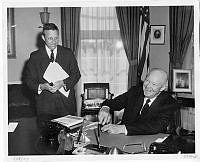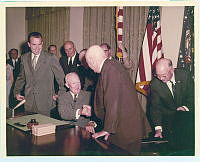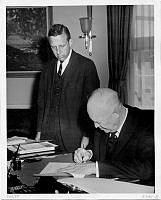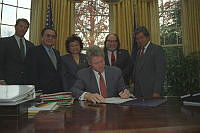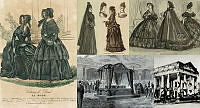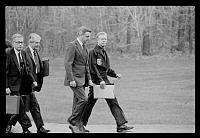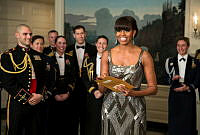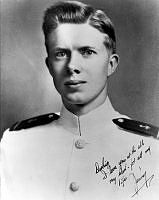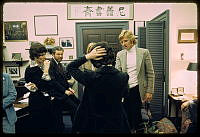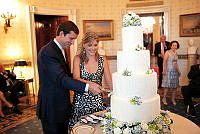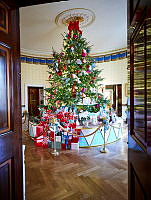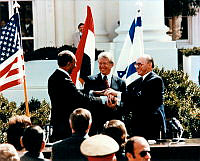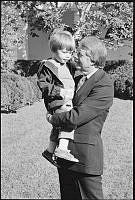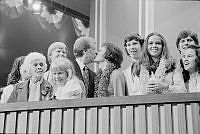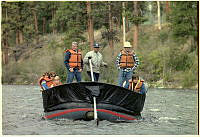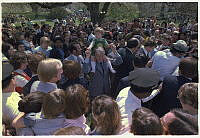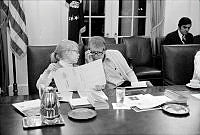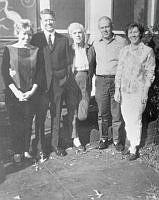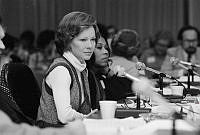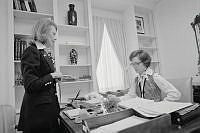Days of Destruction: The President's House
Copyright © White House Historical Association. All rights reserved under international copyright conventions. No part of this article may be reproduced or utilized in any form or by any means, electronic or mechanical, including photocopying, recording, or by any information storage and retrieval system, without permission in writing from the publisher. Requests for reprint permissions should be addressed to books@whha.org
After torching the Capitol about 100 British soldiers and sailors headed west down Pennsylvania Avenue with four officers, including Major General Robert Ross and Rear Admiral Sir George Cockburn in ceremonial bicorne hats, riding behind them. At the deserted White House, the hot and exhausted invaders found the table set for 40-50 dinner guests and they took to the food and drink with a will.
The president, first lady and Secretary of War John Armstrong were the subjects of ribald mockery, and the British began assembling wooden tools, tables and sofa and bedding for a bonfire. Lieutenant George Pratt, a veteran of the Duke of Wellington's campaign against Napoleon in Spain, and "an expert in pyrotechnics," ordered 50 men to surround the Executive Mansion and hurl poles with fiery oil-soaked rags at the end like javelins through the broken windows. Before long the heaps of furniture, bedding, and curtains were on fire. The interior collapsed within the shell, a burning mass of wood flooring, lath, and everything else that was combustible.
Gallery
-

The scorch marks of the fire are still visible today on the White House as two areas have been left unpainted.
White House Historical Association/White House Collection -

The frontispiece to the 1807 travel guide, A Stranger in America by Charles W. Janson, was a rare early view of the White House as it appeared before the 1814 fire.
White House Historical Association/White House Collection -

The North Door surround, embellished by Scottish stonemasons with unquestionably the finest architectural stone carving produced in America at that time, survived the 1814 fire.
Jack Boucher, HABS -

Mrs. Madison, with Latrobe's design skills, combined republican simplicity with high federal style to create a setting for political discourse in a cordial environment. The architect custom-designed furniture for the Oval Room in the Grecian mode then popular in England.
Courtesy of the Maryland Historical Society -

The principal drawing room of the Madison White House—today's oval Blue Room—between 1810 and 1814.
Peter Waddell for the White House Historical Association -

Gilbert Stuart's 1797 portrait of George Washington was taken down and reframed to better preserve it in 2004.
White House Historical Association -

Dolley Madison through the later years of her life saved and cherished this red velvet ball gown. Curators who have studied the fabric of the gown believe it may have been material from the red velvet curtains that hung in the oval drawing room.
Greensboro Historical Museum -

The President's House was left a gutted ruin; the walls still 'white except for great licks of soot that scarred the sockets that had been windows.' President's House by George Munger, ca. 1814-1815.
White House Historical Association/White House Collection














